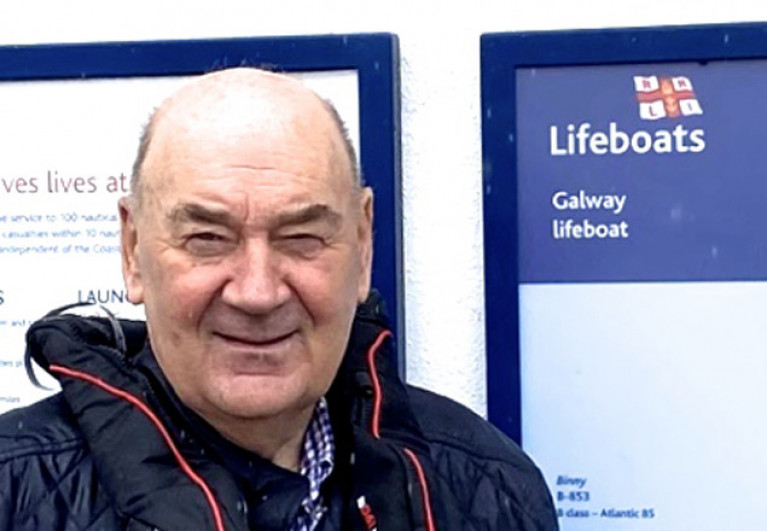Dr John Killeen of Galway, noted engineer, businessman, national administrator and sailing enthusiast, has been elected as Chairman of Irish Lifeboats in succession to David Delamer of Howth, with the Galwayman also continuing in his role as a member of the main board of the parent body, the RNLI.
Apart from his significant and varied contribution to sailing administration, which has included Chairing the Committees which oversaw the two visits to Galway of the Volvo Ocean Race, Dr Killeen’s own special sailing project – working with innovative boat-builder Dan Mill in Galway – has been the building of the elegant and successful 70ft fast sailing cruiser Nimmo from scratch, a highly-complex construction operation which has been rewarded with the completion of many successful voyages.
 Galway built, Galway sailed – the 70ft Nimmo newly-launched in Galway Docks, after being built by Dan Mill in close co-ordination with innovative owner John Killeen. Photo: Jim Grealish
Galway built, Galway sailed – the 70ft Nimmo newly-launched in Galway Docks, after being built by Dan Mill in close co-ordination with innovative owner John Killeen. Photo: Jim Grealish
In addition, Dr Killeen’s special administrative abilities saw him being appointed last year for a second five year term as Chairman of the Marine Institute, Ireland’s highly-regarded oceanographic research and analysis organisation, which is based in impressive premises at the head of Galway Bay, and leads in extensive Atlantic discoveries through research vessels based in Galway Docks.
 RV Celtic Explorer is one of the Irish Marine Institute’s Galway-based oceanographic research ships
RV Celtic Explorer is one of the Irish Marine Institute’s Galway-based oceanographic research ships
Originally from Roscommon, John Killen made his mark as an innovative civil engineer, based in Galway and completing many major infrastructural projects, often using techniques and materials which were revolutionary at the time. His personal professional hero is the 19th Century engineer Alexander Nimmo (1783-1832), who did so much to improve the harbours and roads of the west of Ireland, and apart from naming his cruiser in honour of Nimmo, John Killeen also supported the production of the definitive biography of Nimmo by Noel Wilkins, first published in hardback in 2009, and since brought out in paperback in 2016.
 Dr John Killeen at the conferring of his Honorary Doctorate at NUIG in 2010
Dr John Killeen at the conferring of his Honorary Doctorate at NUIG in 2010
His remarkable administrative talents have been deployed at local, regional and national level, with his voluntary input ranging from serving as a Flag Officer of Galway Bay Sailing Club (of which he is now an Honorary Member) to his longtime contribution to running the lifeboats, while he also serves as Chairman of five charities and is the active President of the Timoney Leadership Institute, which functions at both national and international levels.
He was popularly acclaimed as an Honorary Freeman of Galway City in 2013, and today his quietly-made yet very effective contribution to Irish life at a national level is widely recognised. John Killeen is the embodiment of the old saying that if you want anything done, and done well, then ask a busy many to do it.
This video of Dr John Killeen discussing the work of the Timoney Leadership Institute tells us much:
































































